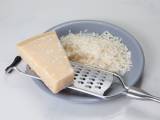Why cheese also has its season: the guide to enjoying every variety at the right time!

Cheeses, like fruit and vegetables, follow seasonal cycles. The production of artisanal and farmhouse cheeses depends heavily on the life cycle of the animals, lactation periods, and even the natural diet of the herds. Let's travel to the most cheesy country, France and learn more about cheese seasons. Here's a guide to understanding when to enjoy certain cheeses and why seasonality has such an impact on their flavors:
The natural milk cycle and cheese quality
Milk production is not continuous all year round, especially for farmhouse cheeses.
For example, in spring, cows, goats and sheep graze on fresh grass, resulting in milk rich in nutrients and unique aromas. In autumn, the meadows still provide herbaceous notes, but the animals also start to feed on hay, slightly modifying the taste of the milk.
Peak periods for milk production are generally in spring and summer, when milk is often most abundant and aromatic, and this is reflected in particularly tasty cheeses, such as goat's milk and ewe's milk tommes. Conversely, winter, when many herds dry up, gives way to hard, long-ripening cheeses such as Comté and Beaufort, produced in larger quantities for year-round ripening.
Which cheeses to enjoy in which season?
- Spring: The return of fresh cheeses
In spring, goats, ewes and cows resume their lactation cycle after the winter, and the milk they produce is particularly suited to fresh cheeses such as crottins de chèvre, brocciu (a Corsican specialty), and faisselle. These cheeses are creamy, fresh and light, perfect for salads and accompanied by seasonal fruit.
- Summer: semi-hard and mature seasonal cheeses
In summer, you can enjoy more mature cheeses, such as Reblochon, Tomme de Savoie or Saint-Nectaire, which benefit from the rich, aromatic milk of high-altitude pastures. This milk produces cheeses with intense flavors, perfect for platters or preparations such as tartiflette, which remain light to savor in warm weather.
- Autumn: Rich and creamy
Autumn is ideal for creamy, bloomy-rind cheeses like Brie, Camembert and Munster. Milk is still rich thanks to summer grazing, and creamy cheeses like Brillat-Savarin and Mont d'Or make their appearance. These cheeses gain in aromatic intensity and creaminess, perfect for fireside tastings.
- Winter: Long-ripening hard cheeses
In winter, hard, cooked cheeses such as Comté, Beaufort and Gruyère take center stage. These cheeses, made during peak milk production seasons, have had time to mature and offer rich, nutty and sometimes spicy flavors. They are ideal for hot dishes such as raclette or fondue.
Tips for a seasonal cheese platter
For a perfect platter, mix different textures and intensities, incorporating fresh and mild cheeses, semi-firm cheeses and aged cheeses. Pair them with dried fruits, nuts and seasonal jams to complete the experience.
By following the seasons, each tasting becomes a new discovery of terroirs and know-how. Whether you're a fan of fresh, creamy or aged cheeses, the seasonal calendar guides you to enjoy the best tastes at the right time!
You may be interested in:
 Adèle Peyches
Adèle Peyches

Comments